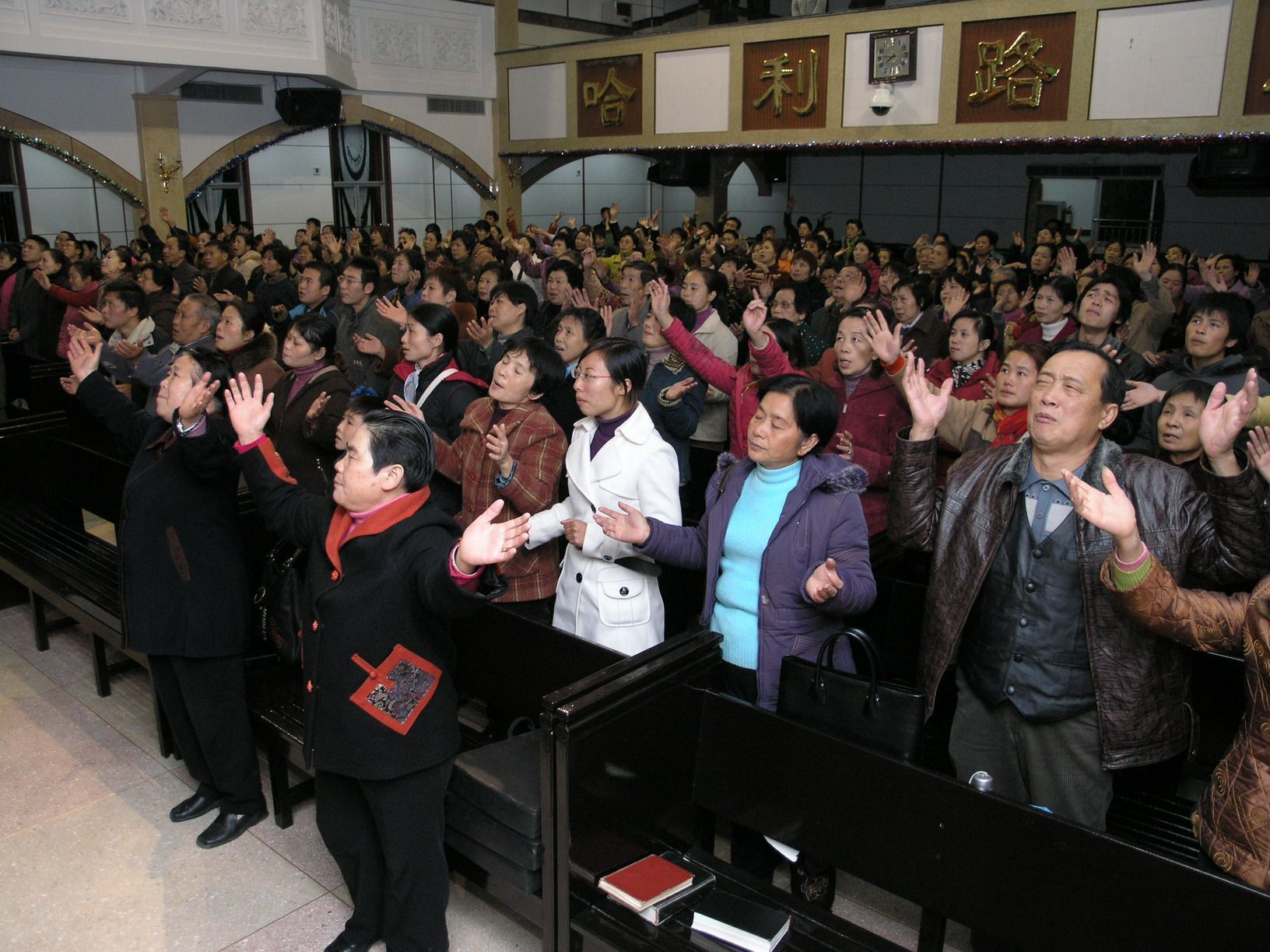The Evangelistic Bands (1930s)
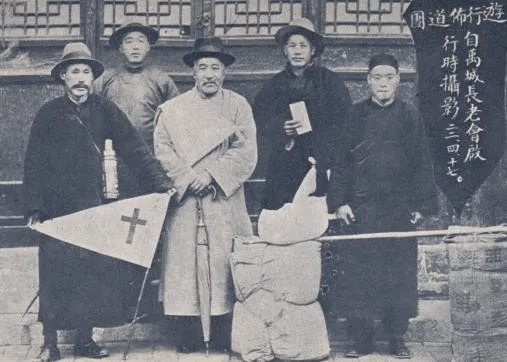
An evangelistic band made up of retired businessmen in Shandong, 1930s.
As the flame of the gospel burned throughout the cities and villages of Shandong Province, thousands of redeemed believers naturally desired to share their faith with those who didn't yet know Jesus Christ. Not only did Christians share their testimonies with relatives and acquaintances, but groups were organized to travel together to proclaim the Good News, in keeping with the example of the New Testament when Jesus' disciples were sent out in small groups.
Ranging in size from two or three people to sometimes dozens, Christians formed into what came to be known as 'evangelistic bands'. Some bands headed deep into the rural areas of the province for weeks at a time, trusting the Lord to provide as they went, while other bands would gather together after church on Sundays and visit nearby villages with the message of eternal life. This spontaneous initiative of the Holy Spirit gave an additional boost to the advance of the gospel. Lost people heard the gospel in their home villages or while working in the fields, and were not required to travel into a city to hear preachers in large meetings.
The evangelistic bands usually carried bags of gospel literature with them to aid in the sharing of their message. A custom emerged where small flags were produced, usually triangular in shape, which each band carried with them wherever they traveled. The flags often displayed information about the location of the local church, or a key Scripture verse.
God powerfully used the evangelistic bands in Shandong, and many thousands of people heard and believed in Jesus Christ. The emergence of the bands caused a shift in the Body of Christ, where normal men, women, boys and girls became preachers of the gospel, and the churches no longer relied so heavily on ordained ministers to do the work of evangelism. This shift caused the gospel to spread more quickly to the unreached masses.
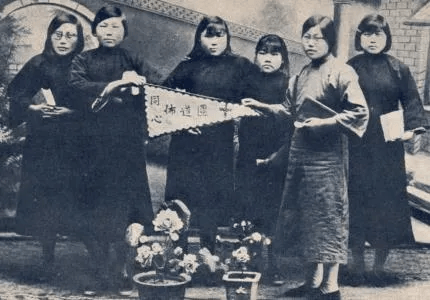
A girls' evangelistic band.
No willing Christian was barred from participating in an evangelistic band. In 1932, the girls from the Jinan Christian School organized themselves into a preaching group and shared the gospel in surrounding villages on Sunday afternoons. One day the girls walked five miles (8 km) in the searing summer heat. Later that evening they
"came home beaming because they had experienced the joy of witnessing for their Savior. The road was dusty, and the day uncomfortably hot, but this little group of schoolgirls sang praises to their God as they walked and spent their rest time by the roadside praying for the souls of those to whom they were taking the gospel.
When they returned at twilight with shining eyes, and voices still joyous with praise, we found that during the whole long, hot afternoon the girls had not bothered about the comfort of a single drink of water, but exclaimed, 'It was the best trip we ever took!'" 1
Three Famous Chinese Preachers
Although the gospel was primarily spread throughout Shandong during the revival by multitudes of normal Chinese believers, some of the more famous names in Chinese Church history were also involved. The list of anointed preachers who ministered in the province included Marcus Cheng, the former naval officer Leland Wang, John Li, Charles Li, and Wang Mingdao, who is still fondly remembered by many Christians in China today as 'the father of the Chinese house churches'.
Three other famous Chinese revivalists spent considerable time in Shandong. They were connected to one another through their shared vision to evangelize all of China, and together they encouraged the formation of hundreds of evangelistic bands that took the gospel by bicycle, on foot, or by whatever means necessary to reach the lost. The English names of these three famous Chinese preachers are Andrew Gih, Watchman Nee, and John Sung.
Andrew Gih
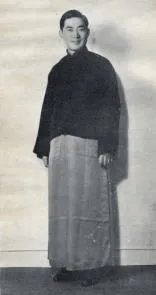
Andrew Gih.
Andrew Gih (Chinese name: Ji Zhiwen), was formerly employed as a post office official in Shanghai, before 1931, when God led him to establish the largest and most effective evangelistic band in China, called the Bethel Worldwide Evangelistic Band. The Bethel bands went on to lead hundreds of thousands of Chinese to Jesus Christ in China and among the Chinese Diaspora throughout Southeast Asia.
The Bethel Band did not spend much time specifically in Shandong, but when they stopped in the province en route from Henan to Inner Mongolia, their meetings in the provincial capital Jinan had a long-lasting impact. Gih reported, "The Holy Spirit did a great work. Within three days more than 200 soldiers were brought to Christ. One day 44 individuals came for personal prayer support and help. Very hard cases were settled before the Lord." 2
The following letter was sent by a church leader in another part of Shandong after the Bethel Band's meetings there:
"We sat for eight days under some of the most powerful preaching I have ever heard. These young Chinese evangelists have stirred us to the depths of our souls by their singing and preaching....
What did they preach? Nothing new at all. Just the same old gospel; no sob-stuff and no working on the emotions. Just the plain facts that the blood of Jesus Christ cleanses and saves from all sin, and that He puts a new song in our mouths and a new purpose in our hearts. These preachers are men whose inner life shines in their faces and whose prayers for the lost fairly shake the rafters. An audience of over 800 people listened to every message." 3
An American Presbyterian chairman, Dr. Paul Abbott, closely observed the work of the Bethel Evangelistic Band in Shandong, and offered a favorable comparison with some of the other Chinese movements of the time:
"Their work impresses one as sane and constructive with emotion released in laughter and song, under control and with no excesses or results to undo or live down. Their follow-up work with correspondence, prayer lists and printed material is skillfully carried on as part of their service to the churches." 4
No part was left untouched when the preachers of the Bethel Band visited a community. Although many Chinese were resentful of Christians and there were many instances of persecution, most of the time the Bethel bands received a warm reception as they sowed God's Word and found fertile soil in the hearts of thousands of people. As a result,
"Bloodthirsty bandits, rapacious officials, overbearing soldiers, anarchist students, dishonest servants, polygamists, sedate scholars, businessmen, rickshaw coolies, beggars, men and women, young and old, city-dwellers and country folks, were moved to confess and forsake sin and to make reparation and restitution." 5
Watchman Nee
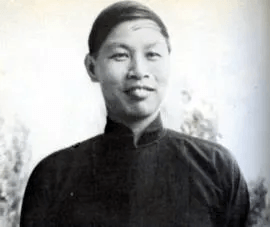
Watchman Nee.
Watchman Nee (Chinese name: Ni Tuosheng) was another to make a mark on the Church in Shandong Province. Already famous in China and around the world for books he had written, Nee came to Jinan in 1932 for a short series of meetings at the medical college, which were attended by large crowds. A report said,
"The longed-for revival spread as more and more of the students found the Savior. Among many of them the experience was to become a legend, for heaven itself seemed to open up their hearts. Afterwards a group of more than 100 students gathered at a mountain beauty spot in the Taishan Range above the city of Tai'an, traditional site of Confucius' grave. They studied the Bible and prayed; and before the end, a large group of them were baptized in the cold pool of a mountain torrent, publicly confessing Jesus as Lord." 6
John Sung
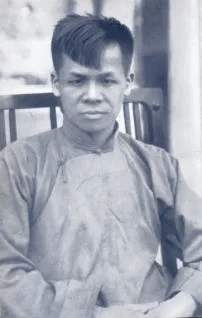
John Sung.
The third of the trio of great preachers to impact Shandong in the 1930s was perhaps the most effective Chinese evangelist of all, John Sung (Chinese name: Song Shangjie). Sung visited Tai'an City in 1931 for a series of meetings. Although Tai'an had previously been a beacon for spiritual life, the light of the gospel had dimmed, and Satan was wreaking havoc among the local believers. Missionary Leslie Lyall observed,
"A wave of anti-Christian animosity had swept over the community. Churches had been wrecked, mission schools forced to close and some of the pastors compelled to flee with their families.... Here, in this center where the Christians were greatly discouraged after their terrible experiences, Dr. Sung was greatly used by God. There were 103 new converts. One of them was a youth of only 19 who had broken every one of the Ten Commandments. He heard the sermon on the Prodigal Son and he came back to God in true repentance. And there were many others like him." 7
When Sung and his team visited Penglai, a group of troublemakers attended the meetings intent on stirring up dissent, but the Spirit of God continued to move in the hearts of the eager crowd. One night,
"There were more than 300 people seeking to get right with God and with one another, amid scenes of deep distress and tearful repentance. The news of this revival spread and many more came in from the country to attend the meetings. The largest building in the city was filled to overflowing. As sin was confessed and put away, waves of joy seemed to sweep through the congregation. Praises mingled loudly with the prayers. The girls of the high school rose from their knees and stood in groups with their arms around one another singing praises to the Lord.
The sermons were sometimes cut short by someone who could not wait to make restitution or confession to someone else present. One aged pastor confessed a sin of 37-years previously which had been weakening his power as an evangelist. The Registrar at the hospital had for years been misappropriating funds and he now reckoned up the total amount of his thefts and made full restitution to the hospital there and then." 8
John Sung returned to the province in March 1935 for a series of meetings in Jinan and Penglai. Martin Hopkins described the meetings:
"Seminary and high school students and Christians from far and near filled the shed three times daily for eight days. Dr. Sung is a preacher of the true gospel of grace.... There were 500 professions of faith and re-consecration. Much stress was laid on personal evangelism and at the close of the meetings 130 evangelistic bands were organized.... Our students received a great spiritual uplift and as a result are most earnest in carrying on the work of teaching the unsaved." 9
Revival Reaches the Villages
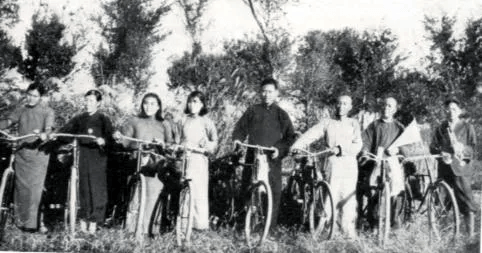
A bicycle preaching band at Yantai in 1938.
Although the revival was centered in the main population hubs of Shandong in the early years, it soon spread to countless rural villages throughout the province. For the most part, the gospel was spread by faith-filled Chinese evangelists who were propelled forward by the Spirit of God throughout the thousands of unreached villages in the interior of the province. An intrepid missionary wrote,
"The native workers and I go into the interior places some 300 miles [486 km], where we travel by bicycle and on foot. We cross rivers, some a mile wide, with the water coming above our waists, in order to reach those villages where the gospel has not been brought.
Our hearts are made to rejoice as we see the multitudes of heathen gather about us with their hearts eager for the gospel message, to hear of Him who died for the whole world that all men everywhere might be saved. We rejoice that it is our privilege to be in such street meetings." 10
Many Chinese preachers were raised up by God during the revival. The results were often spectacular. After severe flooding in 1936 one evangelist, David Lu, reported, "During the past three months, 950 souls have accepted the Lord as their personal Savior, the large majority of whom are refugees driven from their own villages because of the flood." 11
Although in later decades the triangular flags may have been discarded and their methods adjusted to suit the day, the evangelistic bands proved to be a forerunner of how the house church movements have sent teams of zealous evangelists all over China to spread the gospel in recent decades. Whereas in the 1930s and 1940s the Chinese Christians were overjoyed to see thousands of people come into the kingdom of God, the house churches of a later era were mightily empowered to lead millions of people out of the kingdom of darkness and into the kingdom of light.
© This article is an extract from Paul Hattaway's book 'Shandong: The Revival Province'. You can order this or any of The China Chronicles books and e-books from our online bookstore.
1. Crawford, The Shantung Revival, p. 31.
2. Andrew Gih, Launch out into the Deep (London: Marshall, Morgan & Scott, 1938), p. 43.
3. Gih, Launch out into the Deep, p. 44.
4. Orr, Evangelical Awakenings in Eastern Asia, p. 70.
5. Leslie T. Lyall, A Biography of John Sung: Flame for God in the Far East (London: China Inland Mission, 1954), p. 107.
6. Agnus Kinnear, Against the Tide: The Story of Watchman Nee (Wheaton, IL: Tyndale House, 1987), p. 146.
7. Lyall, A Biography of John Sung, p. 68.
8. Lyall, A Biography of John Sung, p. 70.
9. Lyall, A Biography of John Sung, p. 150.
10. Dykstra, Triumphs of His Grace in Shantung, p. 33.
11. Dykstra, Triumphs of His Grace in Shantung, p. 20.





